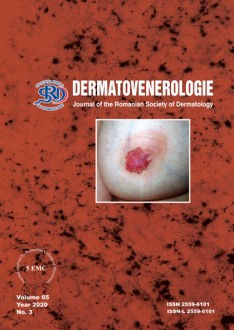Summary
Despite major advances made in the recent years in relation with arthropathic psoriasis (PsA) and psoriasis(PsO), including epidemiological, genetic and pathogenetic data, information including therole of inflammatory cytokines, especially TNF-a and IL-17, which have led to the development of targeted therapies, from which have largely benefited patients with PsA and PsO, there is insufficient scientific evidence related to the influence of physical therapy in PsA. The only data come from studies in patients with ankylosing spondylitis (AS). This creates difficulties in standardizing therapeutic guidelines in the field. Given the above, we performed a multicenter, open-label, controlled study comparing the effects of Adalimumab + Physical Therapy (Group A) with the effects of Adalimumab alone (Group B).
The main objective of the study was to evaluate the effectiveness of physical therapy in reducing pain in patients with PsA.Secondary objective was to evaluate the influence of physical therapy on the quality of life (QoL) of patients with PsA. The assessment of the effects were made according to the recommendations of the guide of the European Society of Rheumatology. The study followed the evolution of patients over 3-6 months of therapy and addressed exclusively to patients with PsA.
Results. Of the total population studied, a greater improvement was observed, compared to baseline in most applied PROs scales, in the group that benefited from adalimumab add-on physical therapy both at the end of week 16 and at the end of the 8 weeks of unassisted physical therapy.
Conclusions. Individualized physiotherapy added to adalimumab therapy improves quality of life after 16 weeks in patients with PsA with several sustained effects and after 24 weeks (8 weeks of individualized physical therapy).


